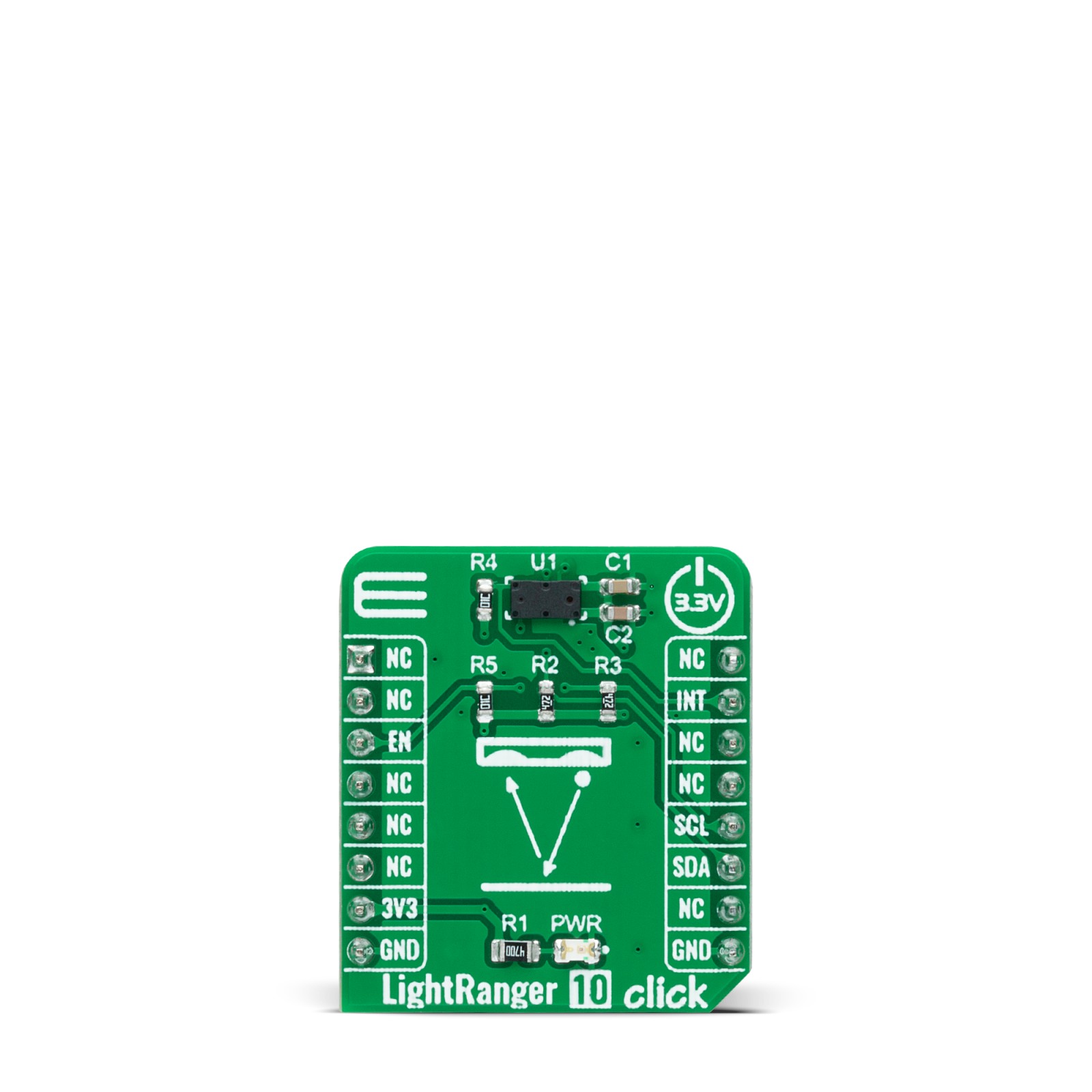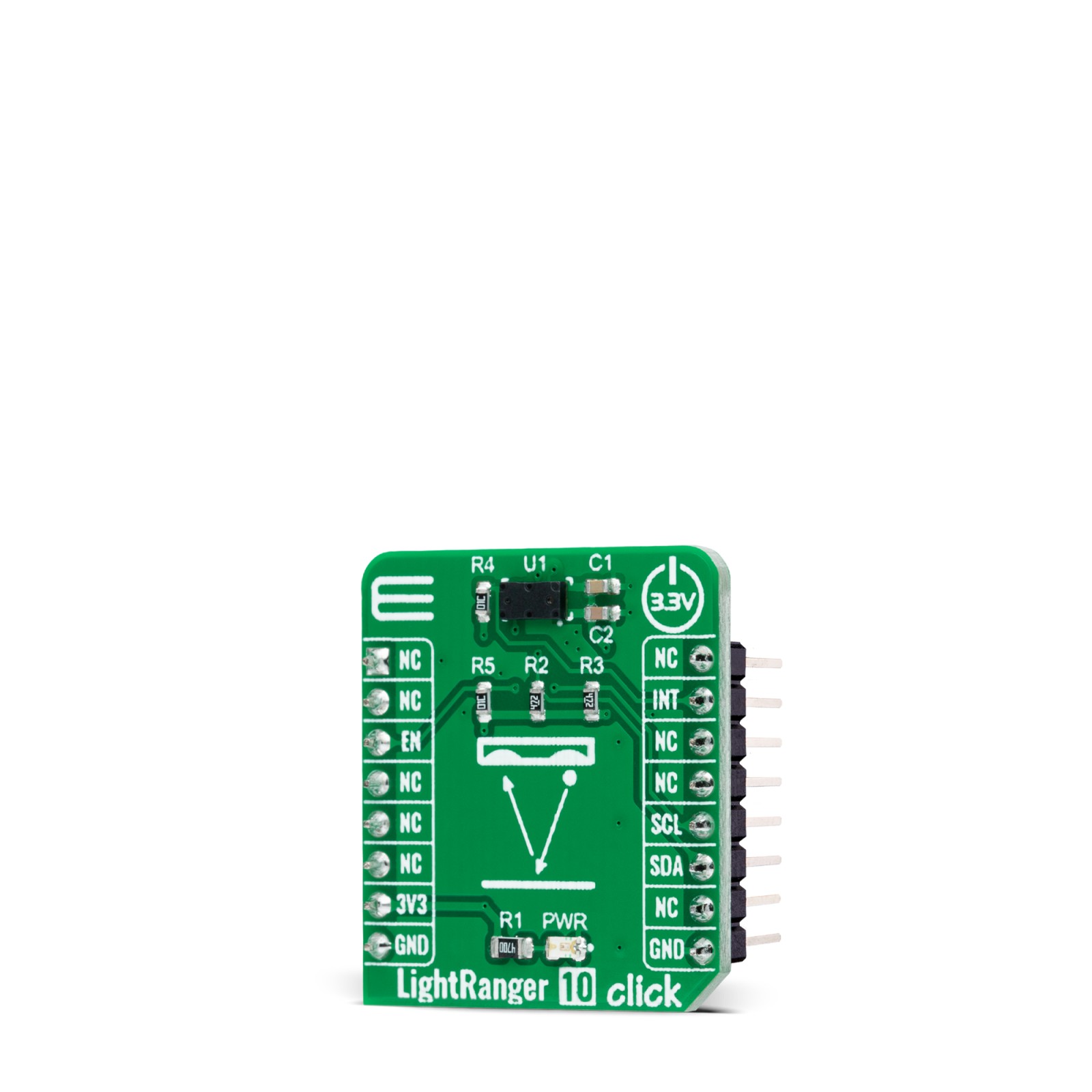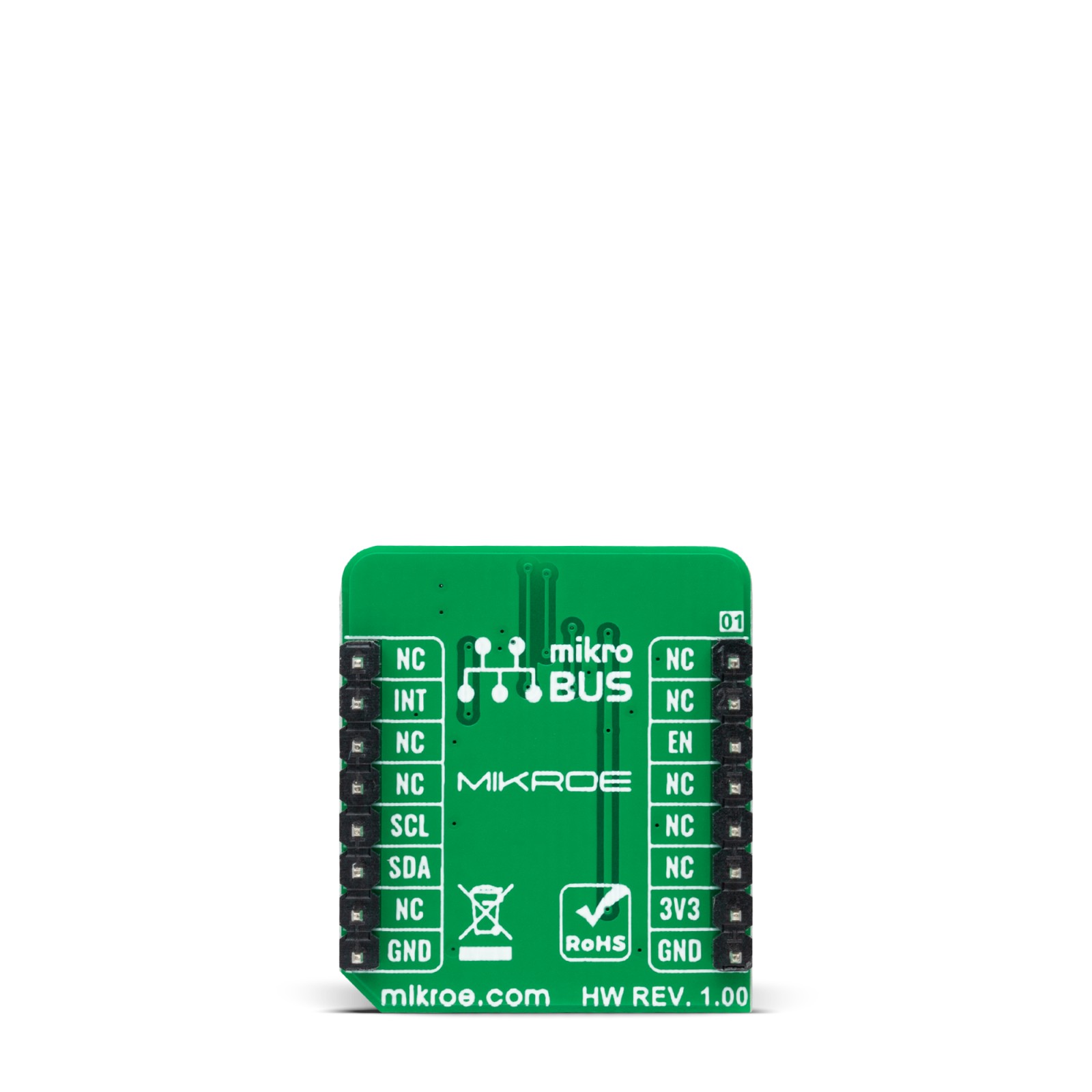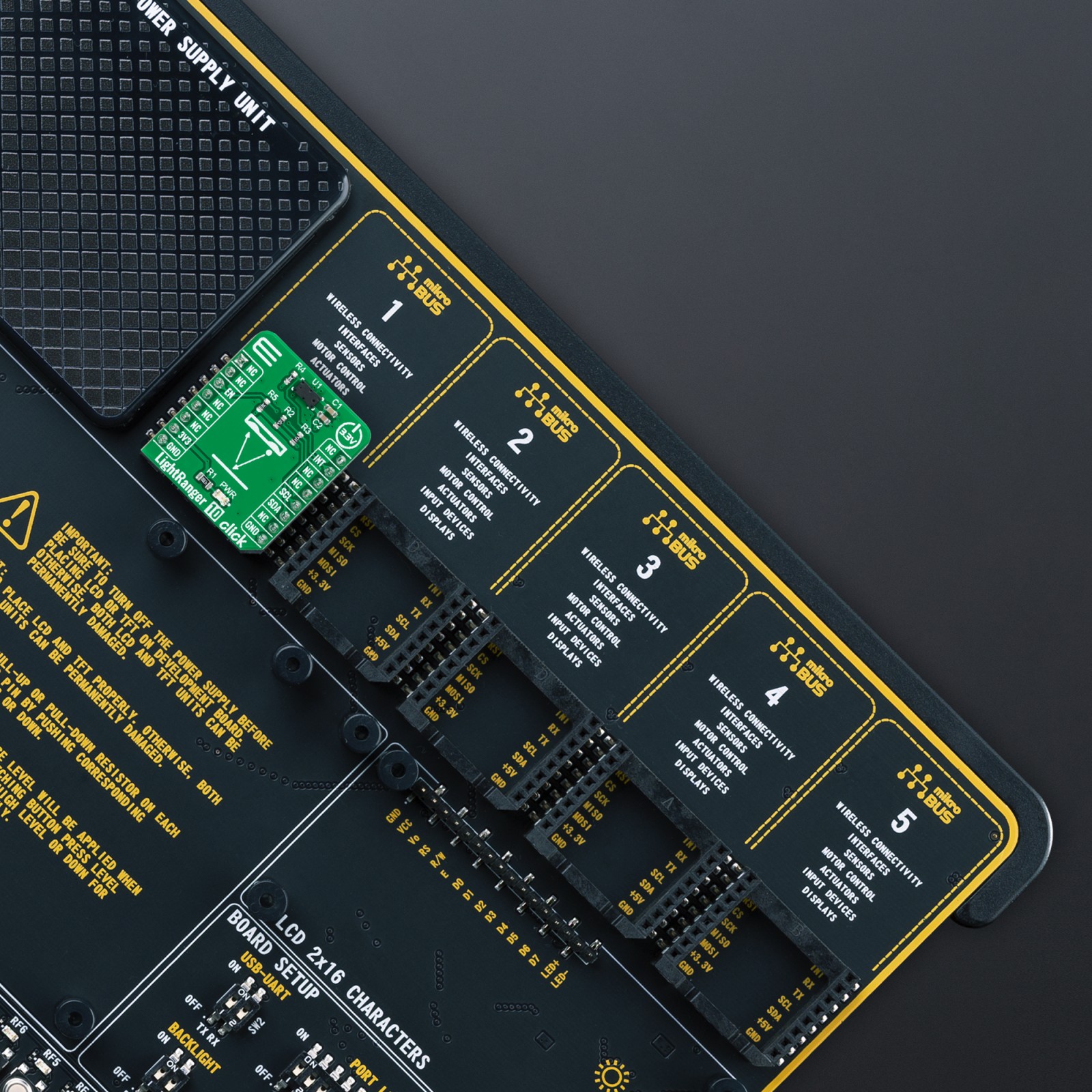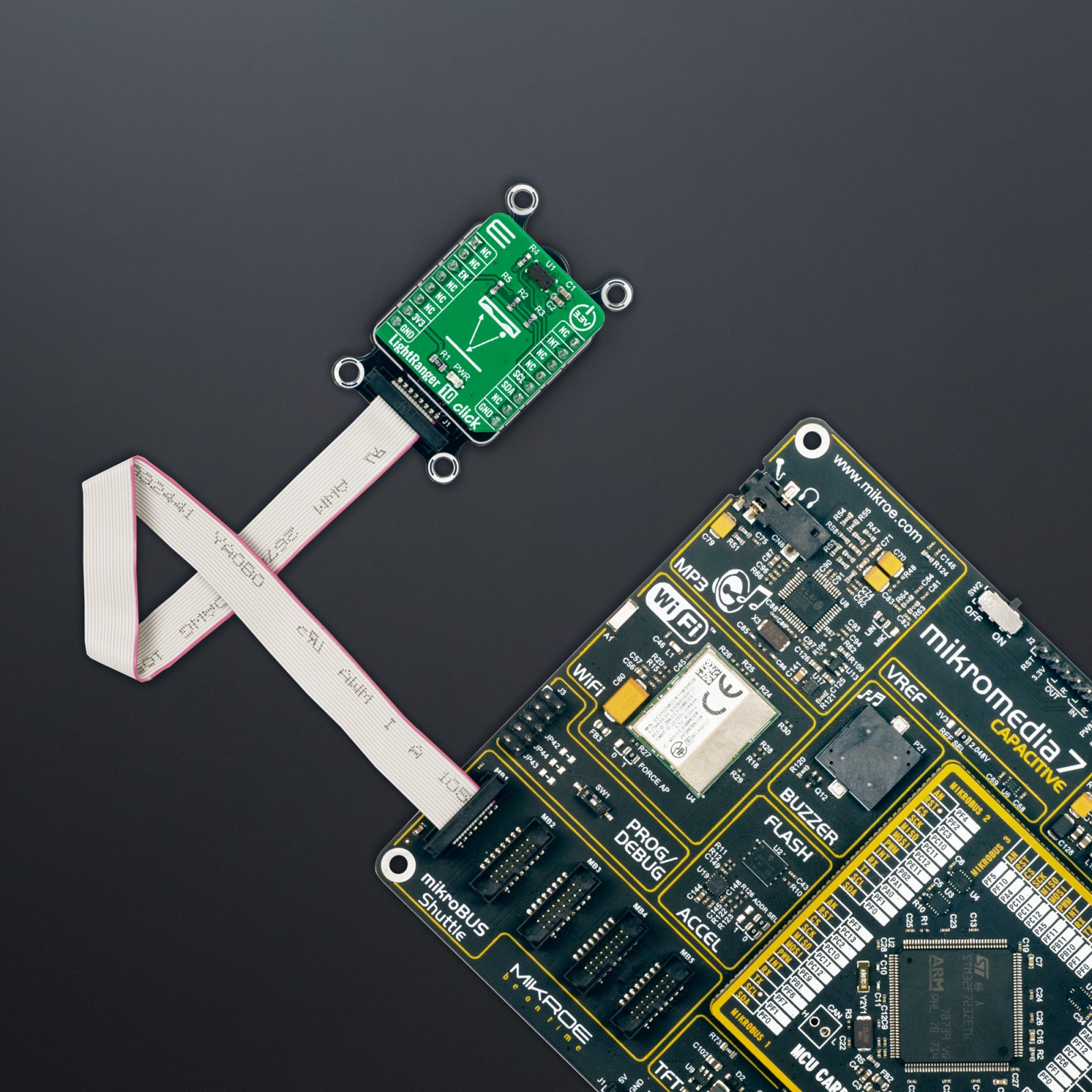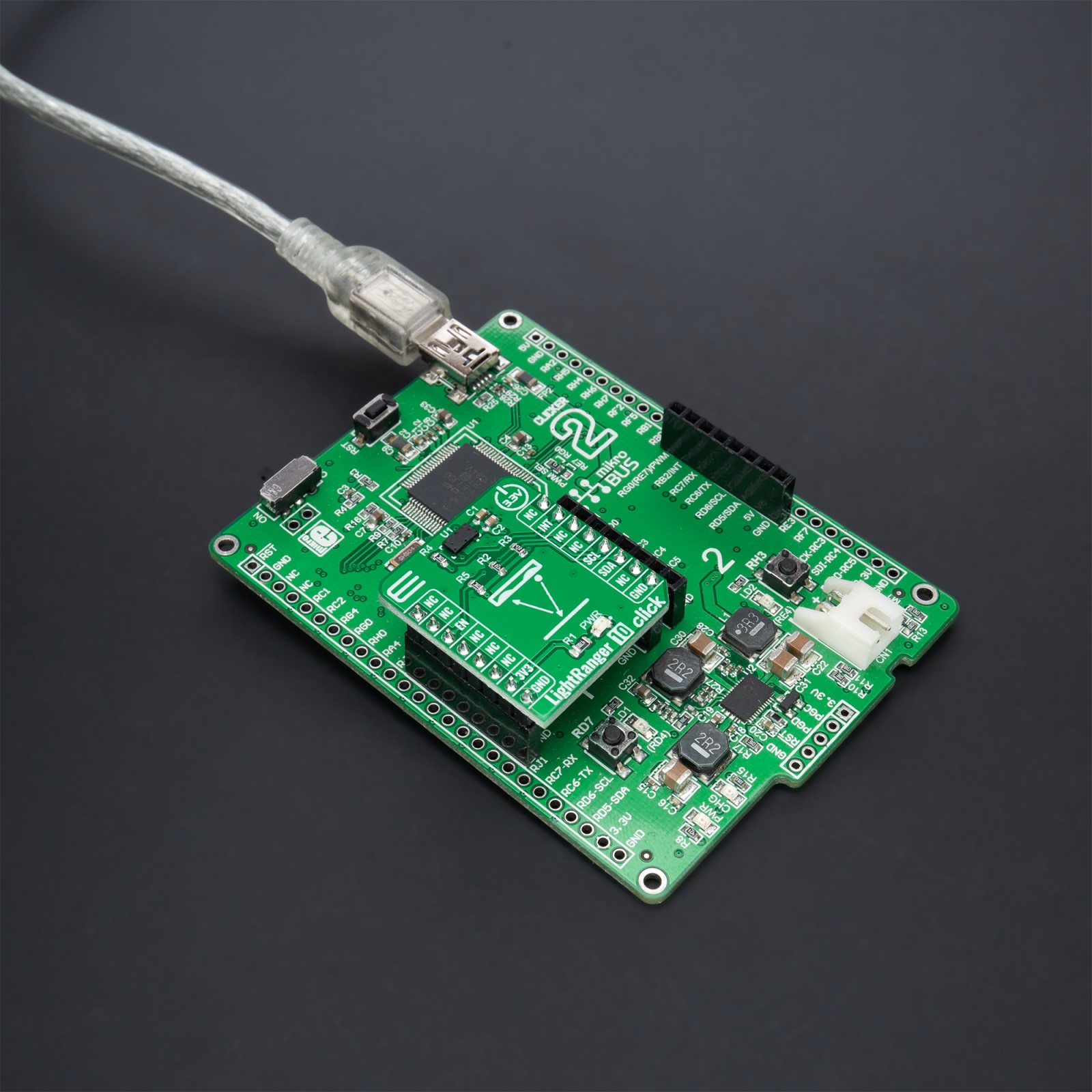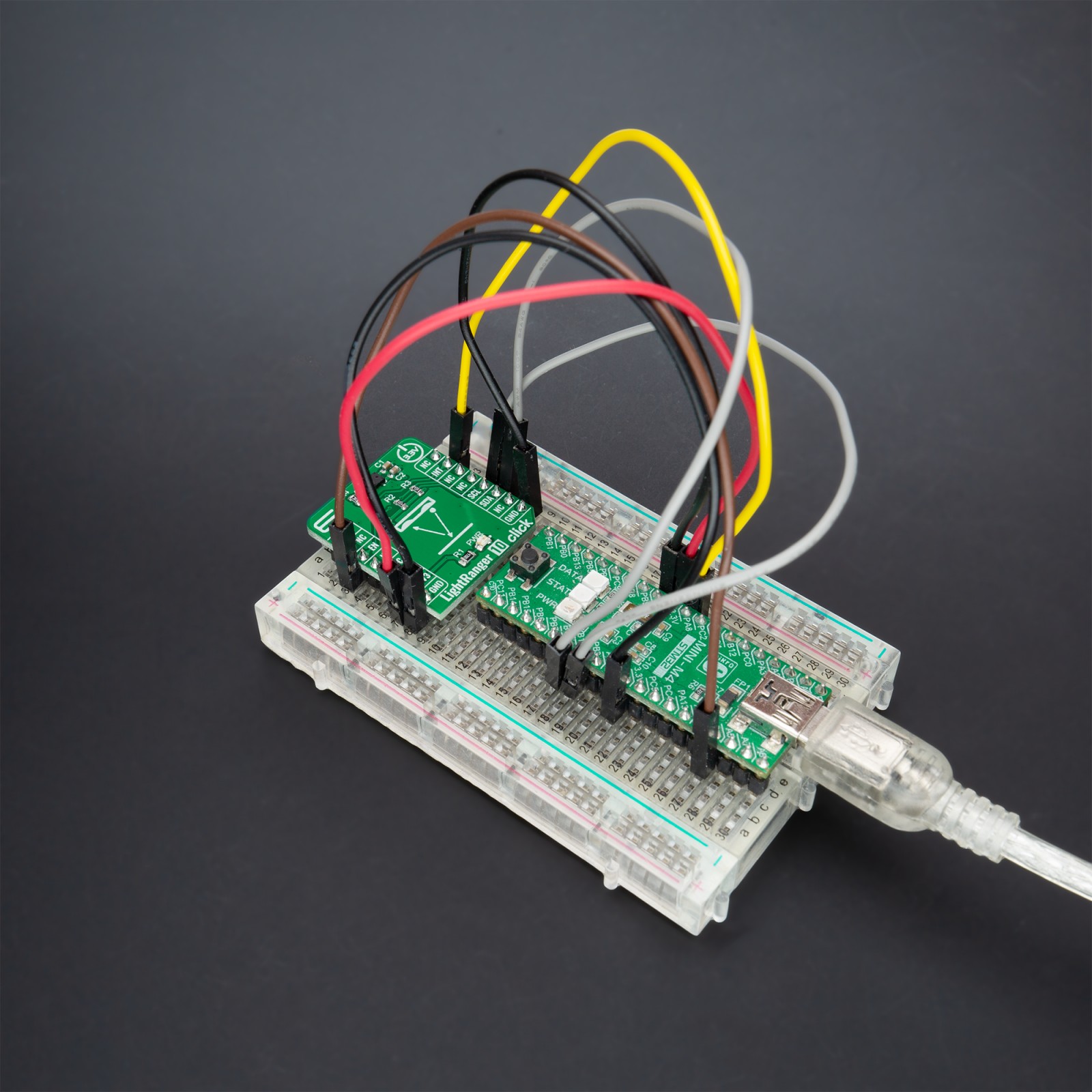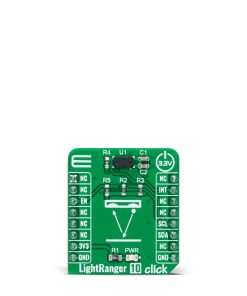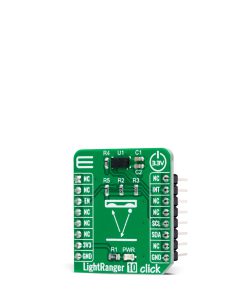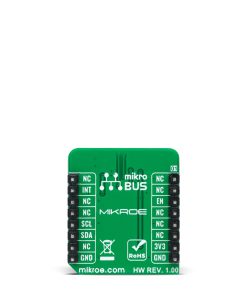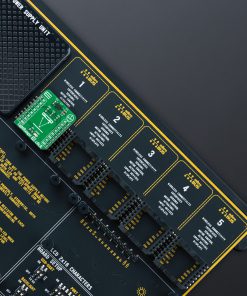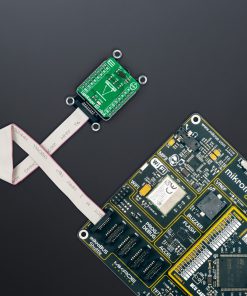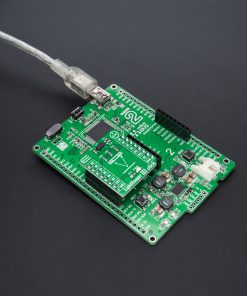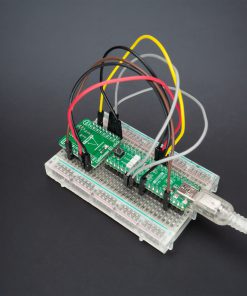LightRanger 10 Click
R425.00 ex. VAT
LightRanger 10 Click is a compact add-on board suitable for range-finding and distance sensing applications. This board features the VL53L4CX, a ToF (time of flight) optical distance sensor with an extended target detection range from STMicroelectronics. Specifically designed for long-range and multi-target measurements, the VL53L4CX provides very accurate distance measurements up to 6m with excellent results over short distances and 18° FoV (Field of View), which improves performances under ambient light. Data processing is performed inside the VL53L4CX, providing distance information and confidence values through its I2C interface. This Click board™ is suitable for presence (object) detection, distance measurement, industrial ranging, inventory control, and many other applications.
LightRanger 10 Click is supported by a mikroSDK compliant library, which includes functions that simplify software development. This Click board™ comes as a fully tested product, ready to be used on a system equipped with the mikroBUS™ socket.
Stock: Lead-time applicable.
| 5+ | R403.75 |
| 10+ | R382.50 |
| 15+ | R361.25 |
| 20+ | R347.65 |

